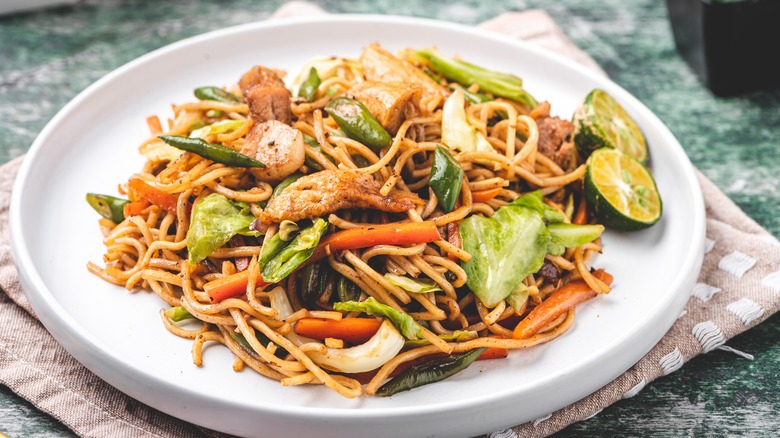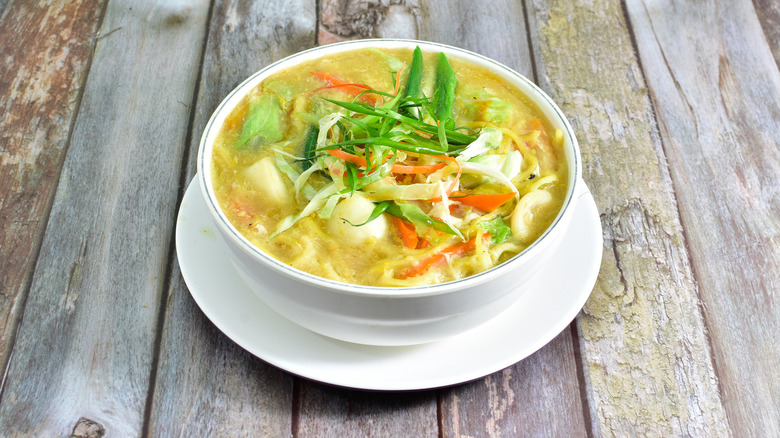The Double Meaning Behind Filipino Pancit
No Filipino gathering is complete without fan favorites like lumpia, roast pig, and casseroles full of pancit cooked up in a variety of ways. Despite its widespread popularity, pancit itself is not native to the Philippines. Like other dishes which were introduced by travelers or colonizers, pancit would have been brought into the country, likely by a trader from China.
The name itself is said to have been derived from "pian e sit" which is Hokkien — a Southern Chinese dialect spoken widely in the Philippines by its overseas Chinese diaspora — for "something conveniently cooked," per Pepper. Pancit was widely consumed during Spain's occupation of the Philippines because the dish was easy to prepare and convenient for workers to take with them as a packed meal. The popularity of pancit in Filipino food culture at the time was such that the country's first known public dining establishment in Manila was said to be a panciteria, which is an amalgamation of the word "pancit" and the Spanish suffix "eria" or a place that sells (via Culture Trip).
There are a number of different types of pancit
Pancit doesn't just refer to one particular type of noodle because there are several. According to Foodicles, the word can refer to egg, wheat, or rice noodles, all of which can be cooked up in many different ways. Pancit can be egg noodles stir-fried with soy sauce before it is tossed with seafood and vegetables. It can also be a thin noodle made with rice or mung bean flour, sautéd with meat and veggies, and seasoned with soy sauce, to make pancit guisado, per Pepper.
Pancit can refer to the ingredient made either with cornstarch or rice, softened in hot water and topped with a rich shrimp and pork gravy colored with achiote to make pancit luglug if the noodle is thick or pancit malabon if it is skinny (via Kitchen Confidante). Pancit can even be thick egg noodles either served with soup and served with pork liver, fish balls, and quail eggs.
While there are many different dishes whose names don't quite reflect their identities like Welsh Rabbit or Lion's Head, Filipino pancit is a straightforward kind of dish — where what you see is what you get (via Paste). The name alone should be a giveaway because this noodle dish isn't just named pancit as a dish, "pancit" is also what the noodle ingredient itself is called.

